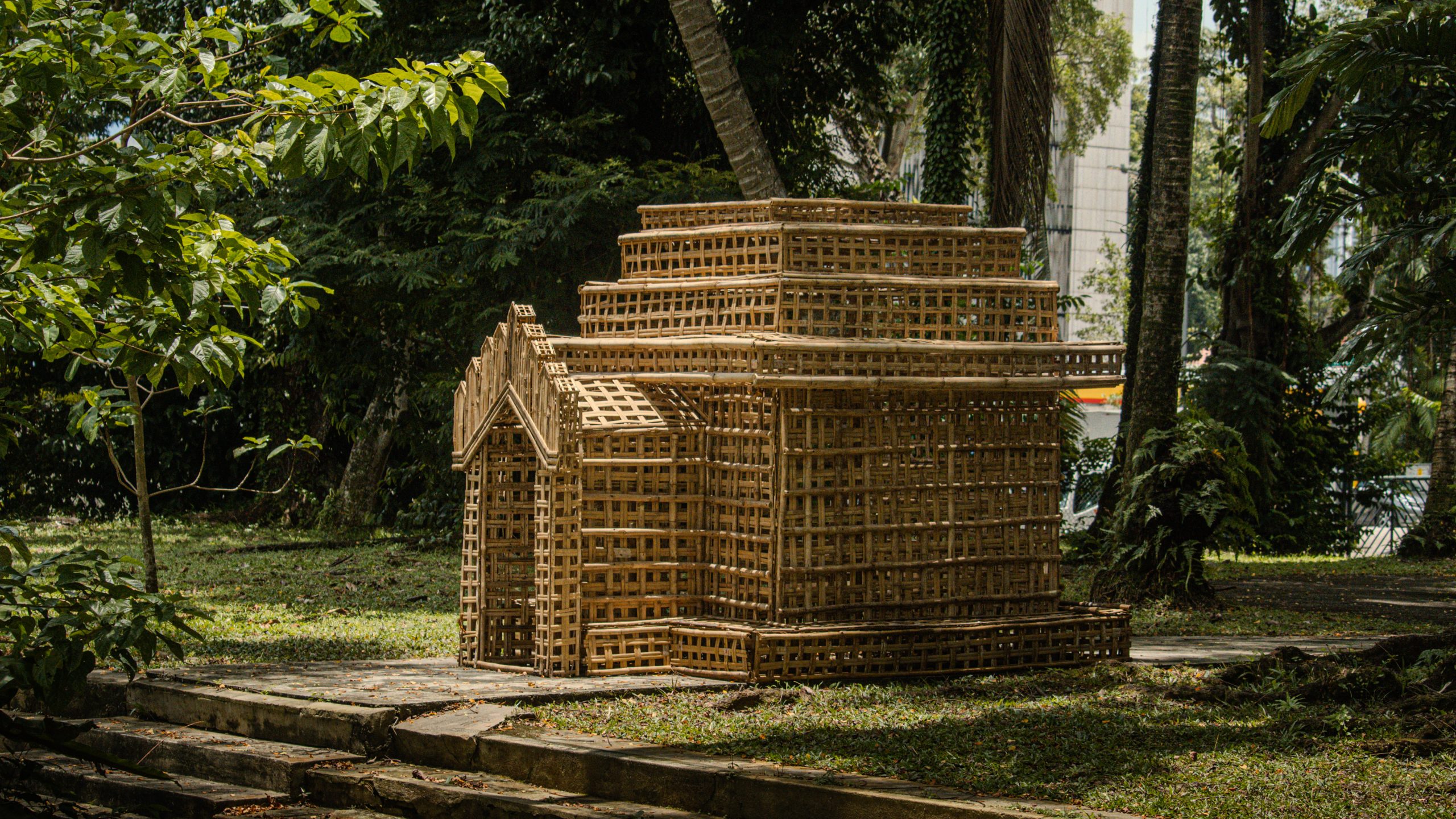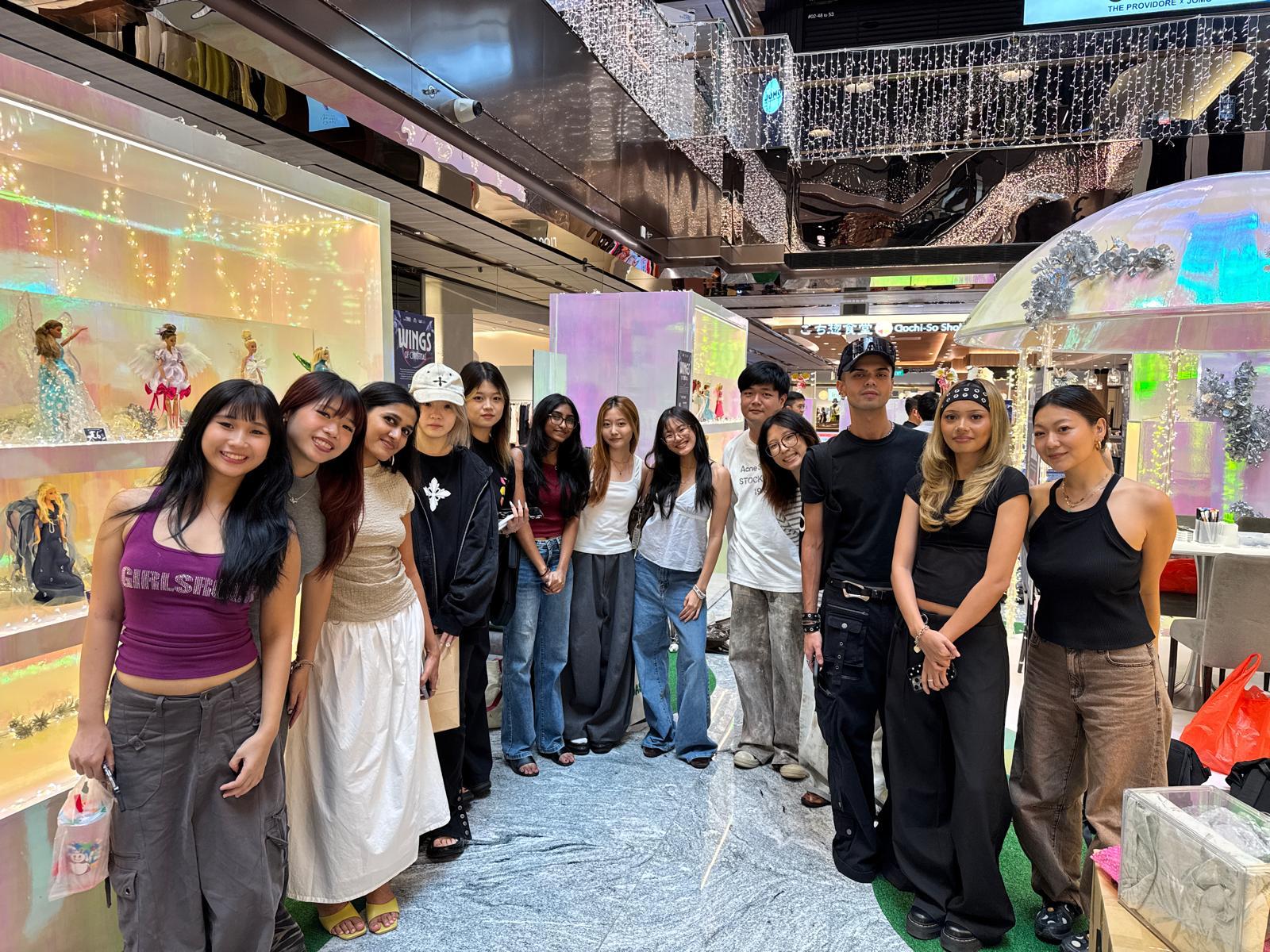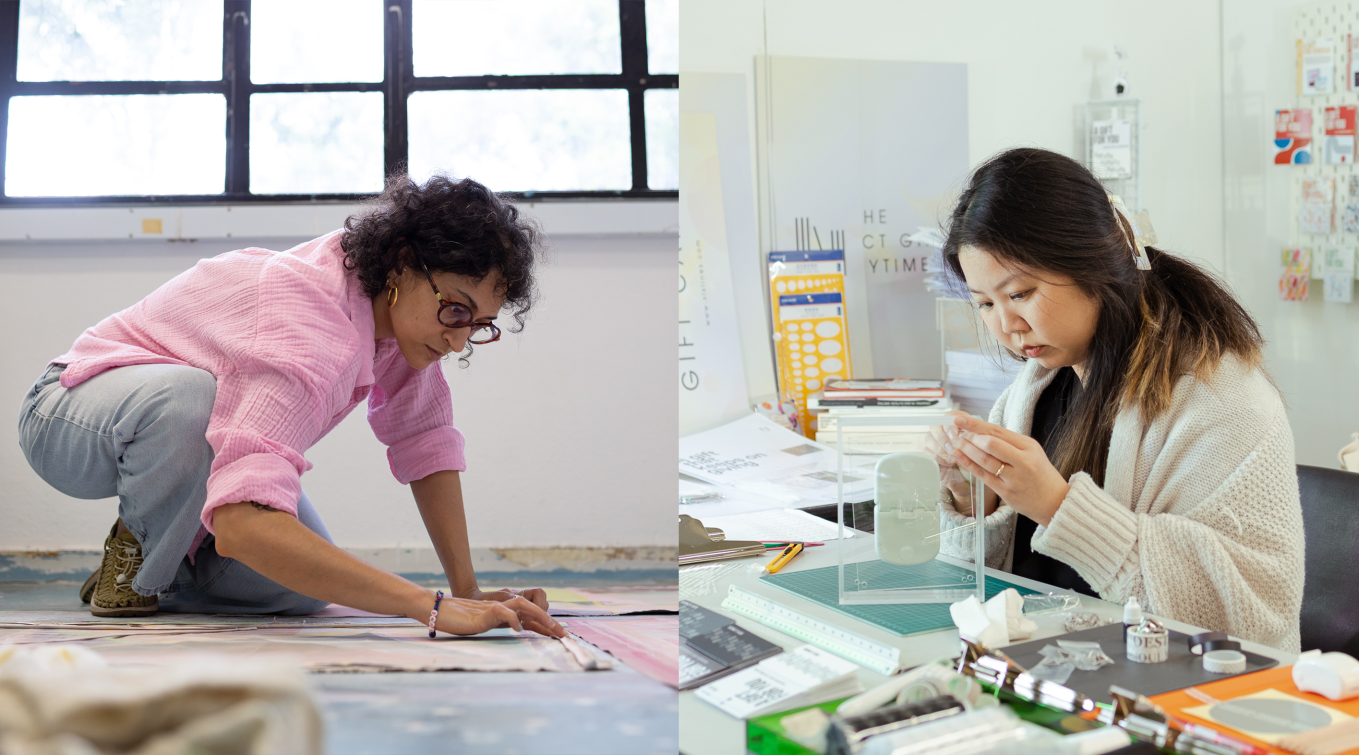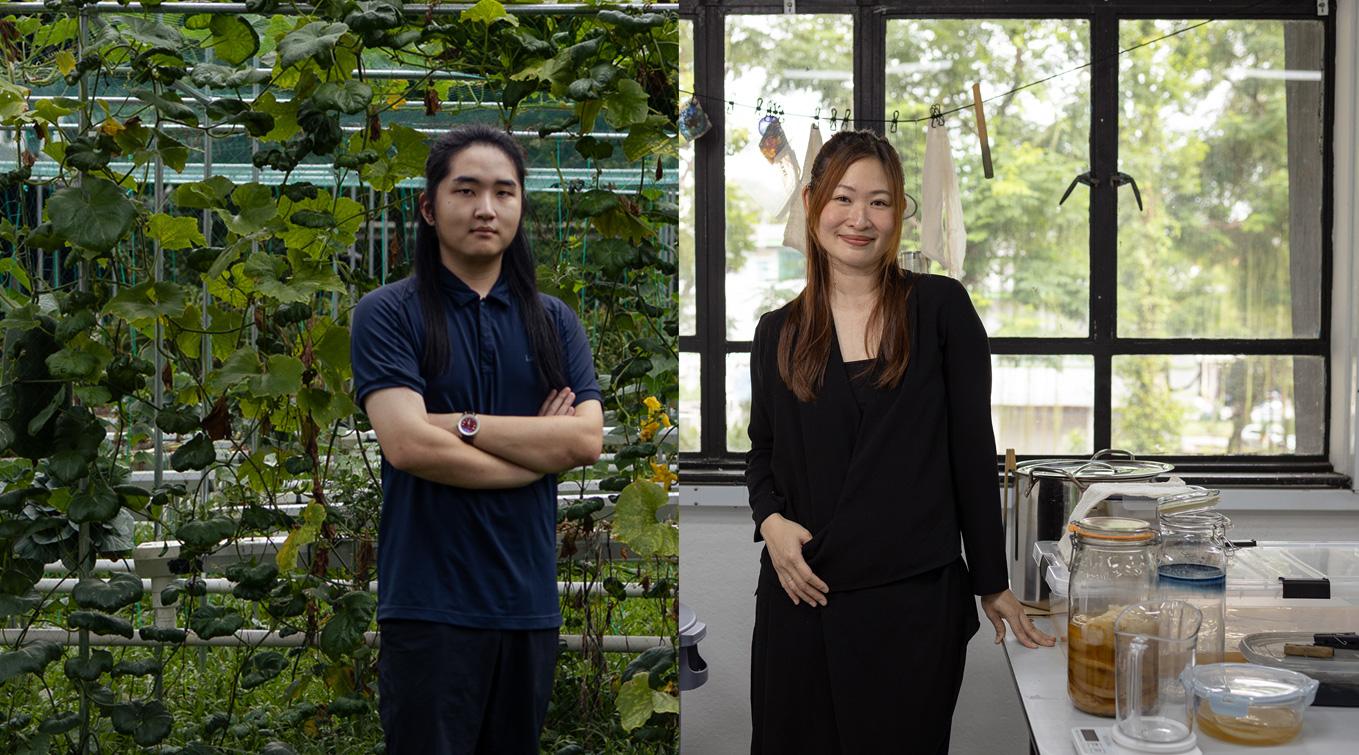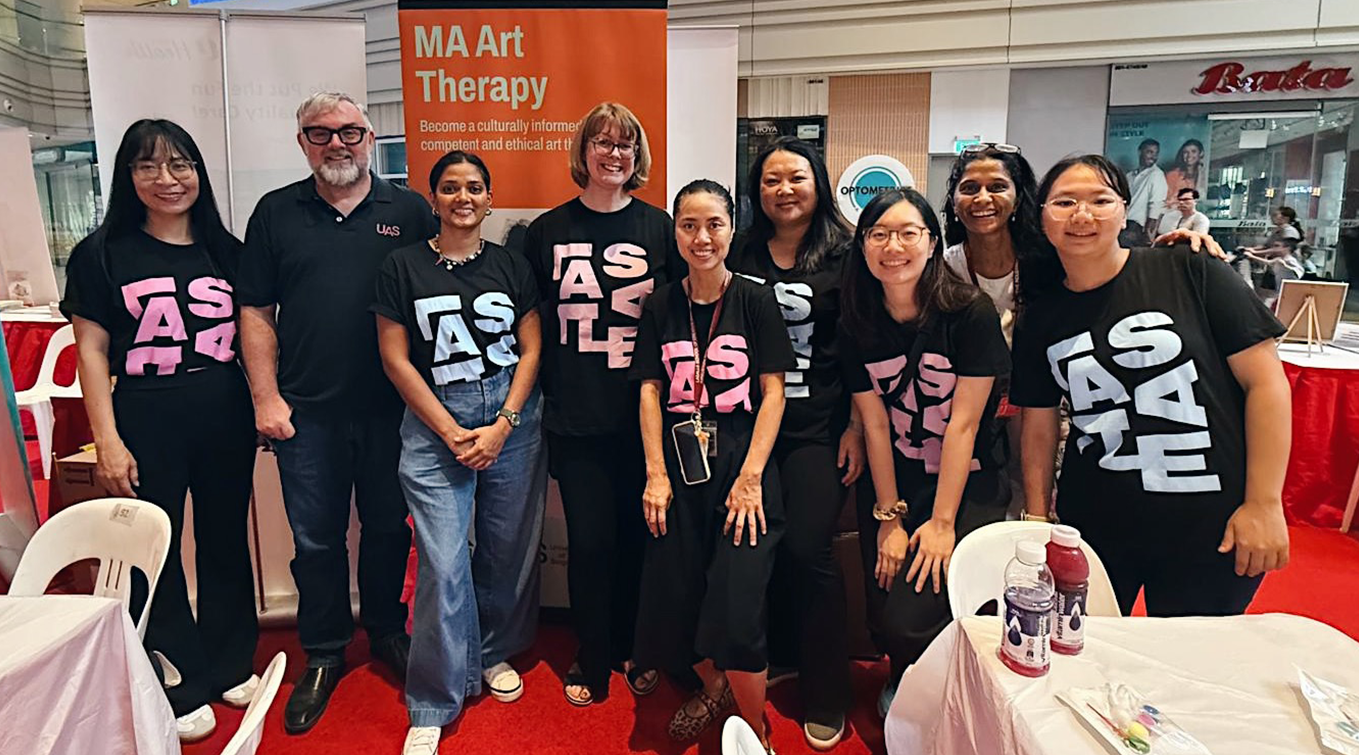Feature: Witnessing grief through art therapy
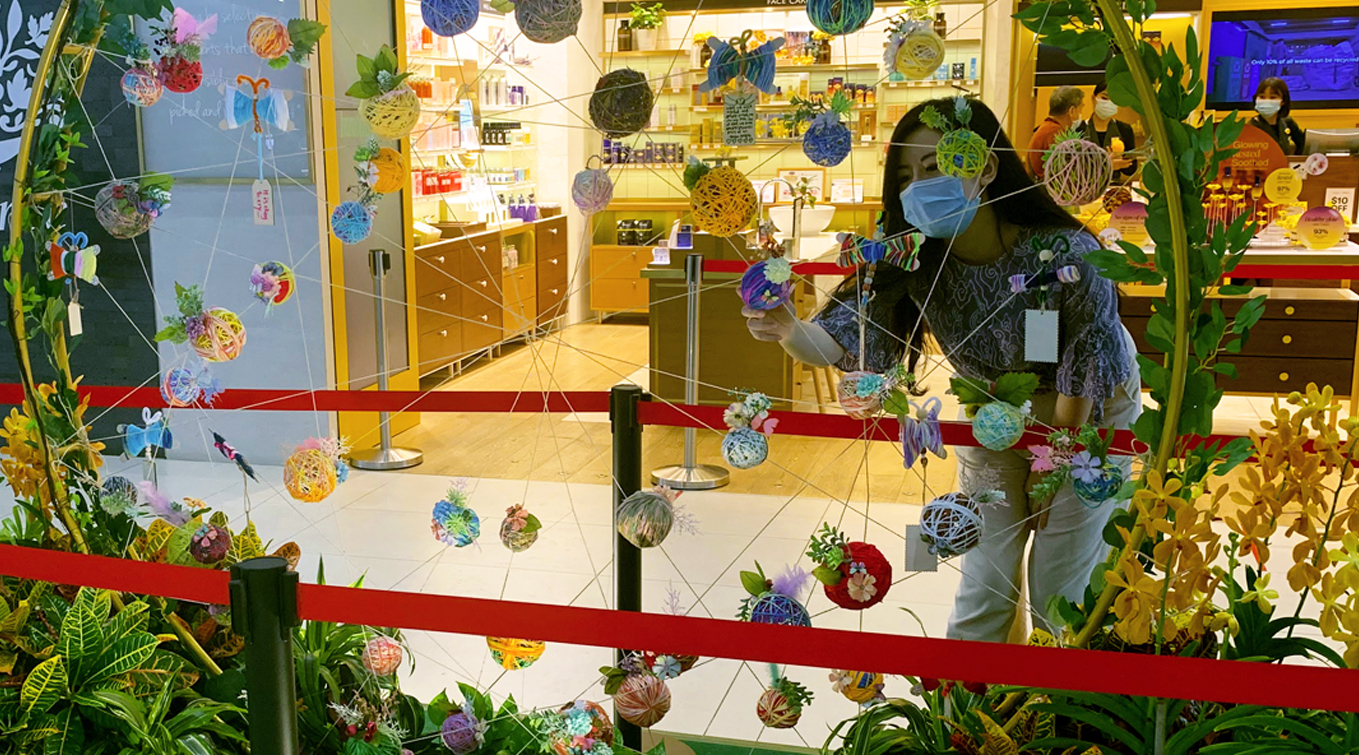
At the Tapestries of Grief: Witnessing through Art Therapy exhibition at Plaza Singapore, constellations of small orbs, known as remembrance balls, hang suspended on strings. At a superficial glance, these remembrance balls are just pretty works of craft, but a closer look at participant testimonials reveals the layers of hidden significance embodied in each ball. Created by participants from all walks of life to honour memories of their departed loved ones, every element of a remembrance ball – from the colour of the yarn, the number of butterflies or even the choice of leaves – thus has symbolic meanings related to their loved one.
Central to Witnessing through Art Therapy is MA Art Therapy alumna and project lead Jolene Chiang. Her training at LASALLE College of the Arts under lecturers Ron Lay, Daniel Wong and Emylia Safian shaped her professional leanings and clinical practice in the pioneering field of grief work, leading her to join the team at Montfort Care which helms the Grief Matters movement that promotes bereavement-friendly practices in the community, workplaces and schools, in addition to offering personalised care to the bereaved.
As Grief Matters began work on Tapestries of Grief, Singapore’s first inaugural grief festival, Jolene conceptualised Witnessing through Art Therapy, prototyping and curating the remembrance balls together with Yeo Jing Xiang and fellow LASALLE alumni Samantha Quek and Han Li June. Integrating her clinical observations in grief work with art therapy, Jolene envisioned the community art engagement project to culminate in an art installation and a two-part video installation Voices of Grief and Witnesses of Grief, based on the bereavement-centric themes to ‘honour, connect and remember’.
Says Jolene, “The palliative care sector in Singapore has grown. But there is nascent support for what comes after someone passes. Grief can be a private affair – many people find it difficult to talk about grief in the community space. So the exhibition was born from the idea of a holding space, a space where we can come together, talk about grief and process our emotions as a collective.”
As the project lead, Jolene designed the therapeutic frame of the remembrance balls and yarn butterfly, weaving themes distilled from her clinical work: of honouring memories and offering presence from helping professionals. Together with current LASALLE MA Art Therapy trainees and social work interns, they prepared art kits that were distributed to 15 community partners. Jolene also developed facilitator training materials for participating organisations including the Children’s Cancer Foundation and several hospices and hospitals, including Dover Park Hospice, HCA Hospice, Pacific Healthcare Nursing Home and Woodland Health Campus.
These efforts elicited an unexpectedly rich response even in the midst of the COVID-19 pandemic, with more than 450 artworks produced in a variety of settings, such as the Grief Matters’ open art studio, art therapy sessions at Ren Ci Hospital, and even a ward memorial service at Ren Ci Hospital and an art session in Assisi Hospice where staff came together as a symbol of solidarity with those in bereavement and in support of fellow healthcare colleagues.
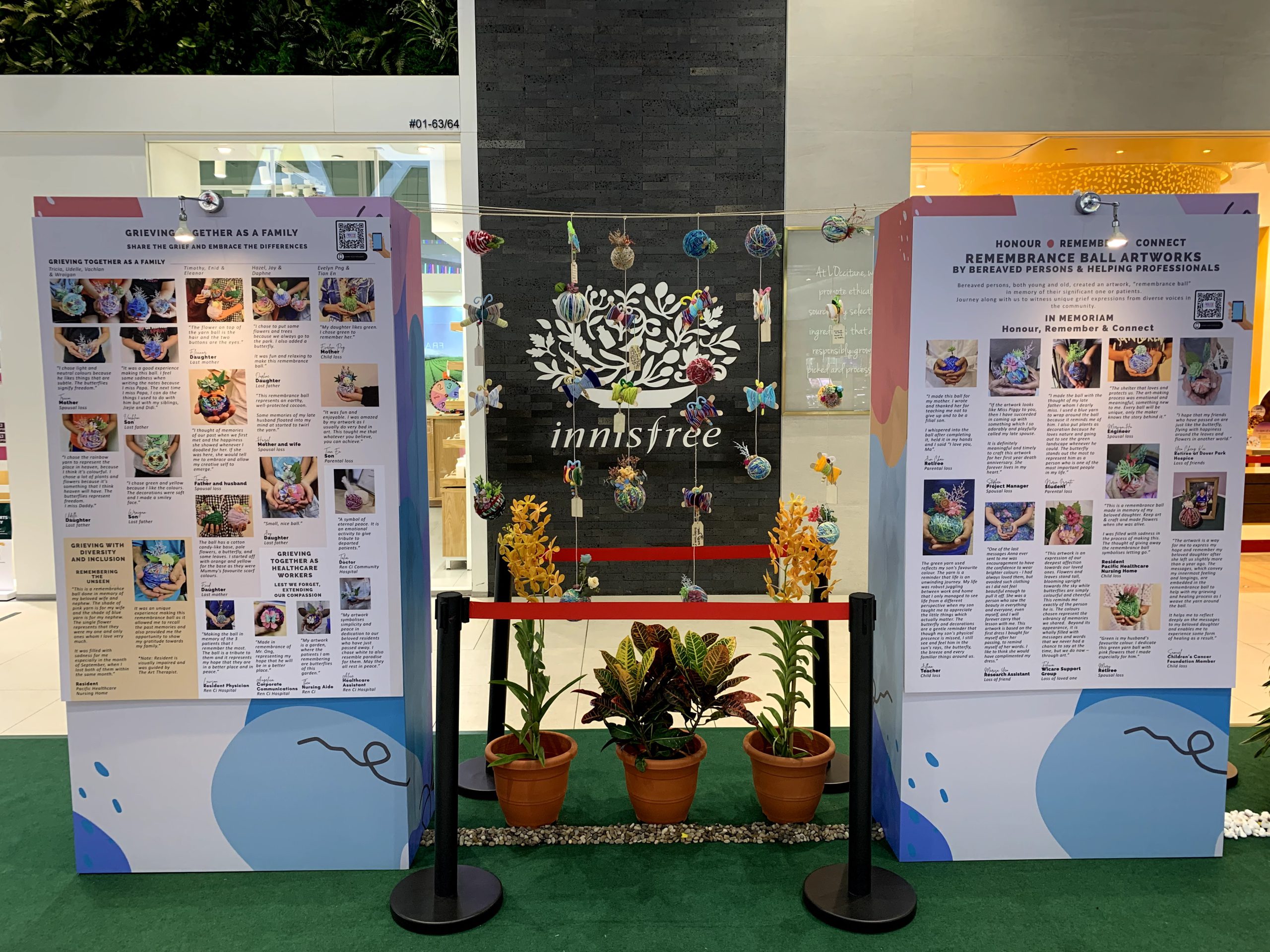
Boards detailing participants’ testimonies at the exhibition.
“We focused a lot on processing the emotions arising from losing someone you love,” explains Jolene. “That’s what makes it different from any other arts and craft activity. As they make choices about the materials for their remembrance balls, a lot of clients will recount the death event. For instance, they may choose colours of the sunset, because their parent passed away at sunset. And that’s what sets the work of an art therapist apart from that of an arts educator who might not be able to hold the space to delve into the emotions behind each of these choices, exploring their significance and supporting the client in meaning-making.”
In Voices of Grief, one catches a glimpse of the intimate art therapy process, which layers and interweaves simple symbolic gestures that work through the tangle of emotions arising from the loss of a loved one. Some gestures are nonverbal, such as having the client knot the yarn to the ball, a symbol of connection to their loved one, before determining how much to weave before they feel ready to cut the yarn. Other gestures, like the writing of notes in response to intentionally curated prompts, enable clients to share unspoken sentiments and lingering wishes or regrets, before symbolically depositing these messages into the ball.
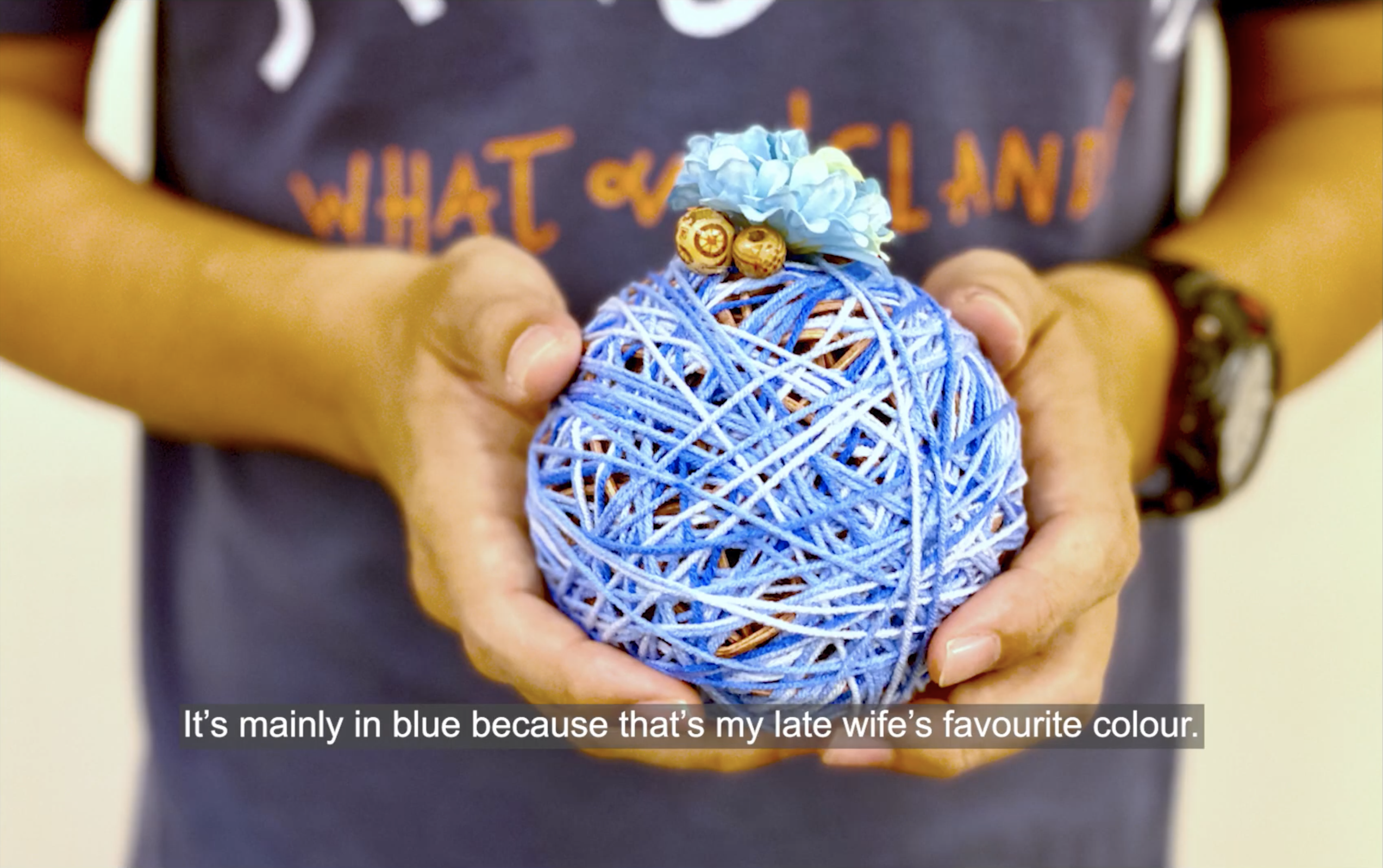
Mervyn, a participant featured in Voices of Grief, discusses the significance of using different shades of blue on his remembrance ball.
Jolene feels that the strength of art therapy is how it enables clients to express emotions through nonverbal or symbolic means, which can prove especially powerful when it comes to something as complex and contradictory as grief. “Grief is not just about pain and despair – there is also the remembrance of fond memories, of laughter,” she explains. “It is important in grief work for clients to remember the deceased in a myriad of multidimensional ways.”
This can prove challenging, especially in cases where loved ones passed away due to diseases like cancer. Dwelling on the last days of their loved one’s life, clients may fixate on their loved one’s suffering or physical deterioration. Through multilayered art therapy frameworks, however, clients are stretched and prompted in a non-confrontational way to explore different narratives that still allows them to express their grief. “When a client is asked to reflect on a subconscious choice of materials or colours, they may realise, for example, that they chose a specific colour because it was the colour of their late mother’s favourite scarf. That in itself is a positive memory that they realise they are still able to hold on to.”
The project’s emphasis on building a bereavement-friendly ecosystem also led it to expand its focus to include healthcare professionals such as doctors, nurses, hospice workers and art therapists who are, as the project calls them, “companions in grief”. These healthcare workers created their own artwork: yarn butterflies that hover around the remembrance balls in the installation, offering their presence and accompanying the bereaved. In at least one instance, art therapist and client wove a butterfly together like a dyad – an apt metaphor for the therapeutic alliance.
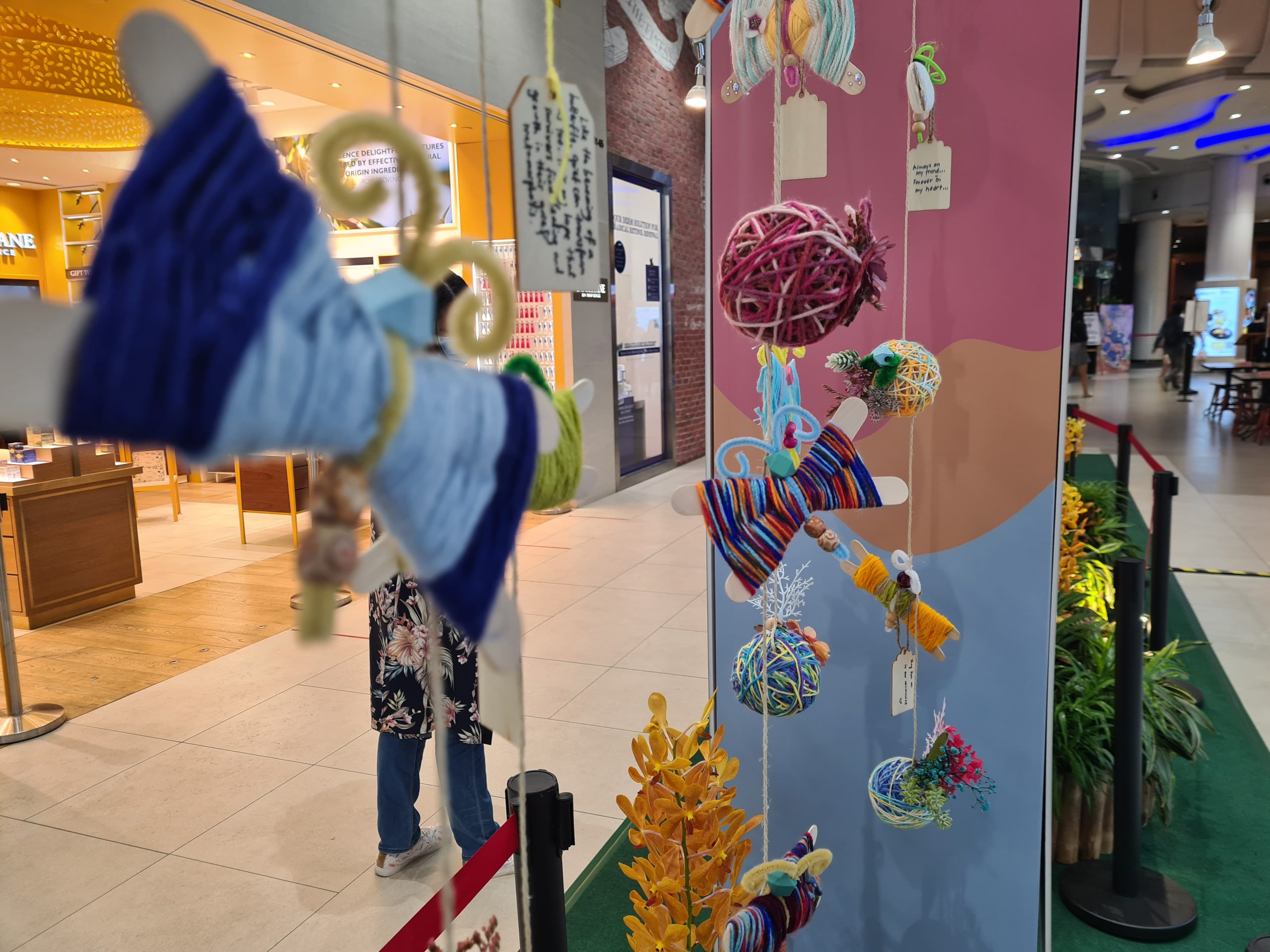
Yarn butterflies by helping professionals, interspersed amongst the remembrance balls.
Other than healthcare professionals, Jolene stresses that it takes a whole community to support someone in grief, be it a colleague, friend or family member. “We have to normalise expressions of intense emotions, as well as learn to offer compassion to people undergoing pain. While this pain can be difficult to face, we have to learn to talk about it instead of avoiding the issue. The fact is that people who are grieving are already experiencing these intense emotions regardless of whether we talk to them about it.” Furthermore, the act of externalising grief is important for a bereaved person. “Grief needs to be witnessed,” Jolene asserts. This act of witnessing is precisely what Tapestries of Grief challenges the public to do – to take in the personalised expressions of grief that created each remembrance ball, layers of intense emotions sublimated into a symbolic work of art.
The exhibition is thus a testimony to the power of art therapy, a conviction that Jolene has carried since her MA studies. “The curriculum and training designed by the programme team at LASALLE has taught me to always listen closely to the spirit and intuition that guides the creative process, letting art unfold, manifest and create unprecedented and often surprising positive impacts that can gently alleviate human suffering and pain.”
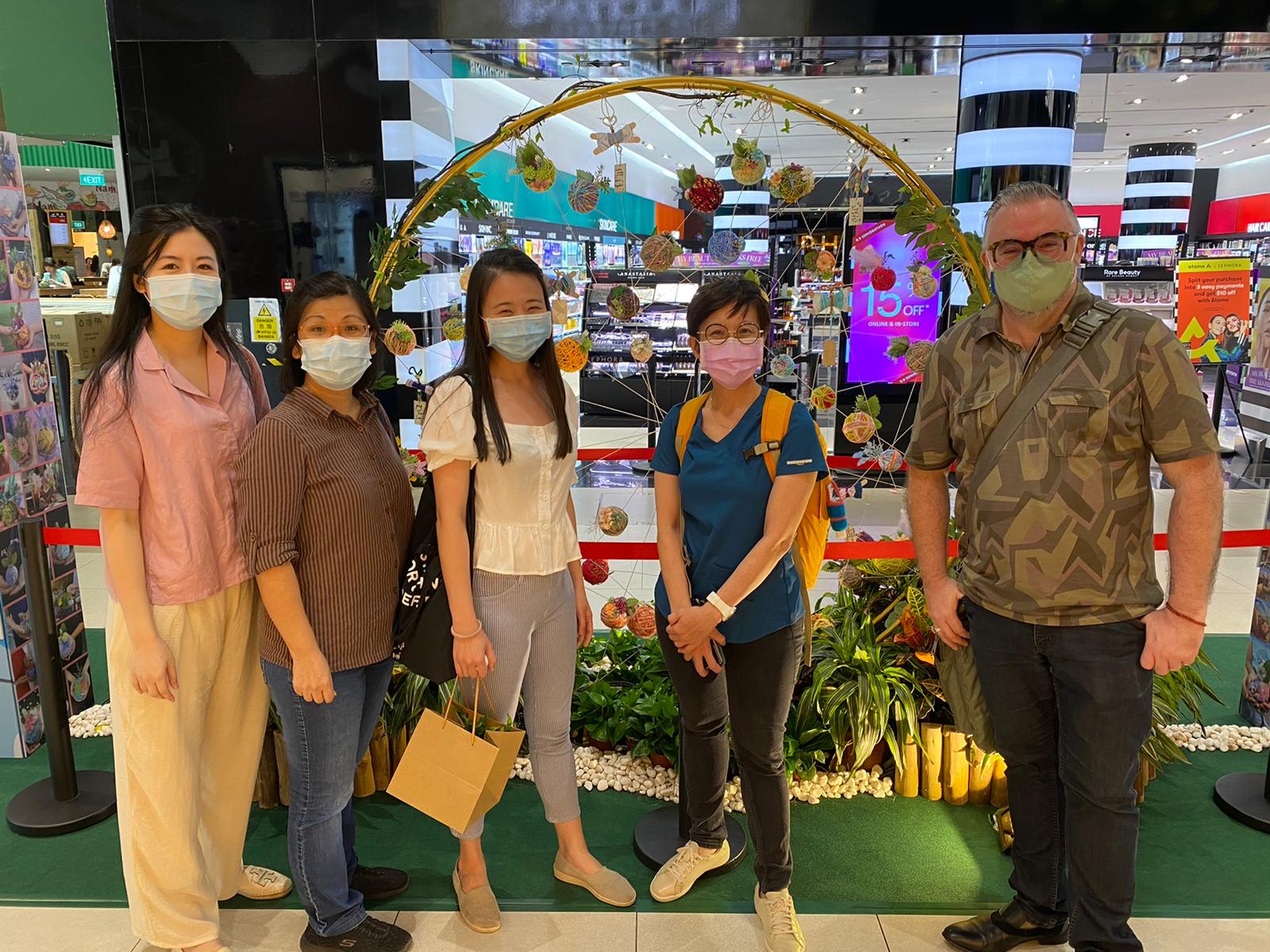
(From left) Jolene Chiang with fellow MA Art Therapy alumni Ong Leng Hong, Samantha Quek and Vivian Wong, as well as MA Art Therapy Programme Leader Ron Lay. Image courtesy of Samantha Quek.
About Tapestries of Grief
Organised by Grief Matters, the festival includes talks, experiential workshops and a community art project which aims to let the community explore and experience our emotions surrounding the loss of our loved ones and learn how to support persons in grief. Learn more here.




